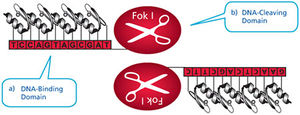Beyond the Basics: Genetic, Intestinal, and Viral Contributors to Autism
Introduction
At right is a sample image insertion. It works for any image uploaded anywhere to MicrobeWiki. The insertion code consists of:
Double brackets: [[
Filename: PHIL_1181_lores.jpg
Thumbnail status: |thumb|
Pixel size: |300px|
Placement on page: |right|
Legend/credit: Electron micrograph of the Ebola Zaire virus. This was the first photo ever taken of the virus, on 10/13/1976. By Dr. F.A. Murphy, now at U.C. Davis, then at the CDC.
Closed double brackets: ]]
Other examples:
Bold
Italic
Subscript: H2O
Superscript: Fe3+
Section 1
Include some current research in each topic, with at least one figure showing data.
Gut Microbiome
Although autism has most commonly been associated with strictly neurological abnormalities, recent research points to the intestine as a significant contributor to the disorder. 23-70% of patients with ASD also present with gastrointestinal (GI) dysfunction, which often manifests as increased intestinal permeability and digestive issues.[1][2] [3] Additionally, relating to GI dysfunction is the gut-brain axis, another likely influential factor in autism. The axis is a relatively new area of research, but already there are many studies demonstrating bidirectional communication between the brain and the intestine.[4] Increases in autistic speech, social, and behavioral challenges, as well as aggression and irritability, have been observed to trend with severity of GI dysfunction, demonstrating the link between GI issues and the gut-brain axis.[5]
Answers to how and why the gut plays a role in ASD may be found within the gut microflora. The intestinal microbiome hosts a signature pattern to the types and amounts of bacteria present; maintaining proper homeostasis of these colonies is crucial for both disease prevention and normal neurological development.[6][7] ASD patients frequently present with dysbiosis in their microflora: a comparison of ASD presenting children and their siblings found a significant increase in Bacteroidetes and decrease in Firmicutes [Fig 1].[8][9] These findings are supported by rodents with abnormal populations of certain gut microbiota having altered emotional and physical development.[4][10] Of note are bacterial orders Clostridia and Bacteroidia, members of the two aforementioned phylums, which show the greatest diversity between ASD and presenting mice and control mice.[3] Microbes in greater quantities in ASD mice were suspected of contributing to pathogenesis, whereas those that were deficient might promote normal activity.[3]
Re-regulation of irregular microbe levels may be an avenue of future treatments for ASD. Mice bred to exhibit ASD traits with associated irregular gut microbe composition were injected with Bacteroides fragilis. The treated rodents experienced alleviated ASD symptoms along with improved gut barrier integrity.[3] Further research is needed to determine whether similar microbe supplementation for ASD individuals could establish normal intestinal flora and subsequently relieve ASD symptoms involved in the gut-brain axis and GI issues.
Section 3
Include some current research in each topic, with at least one figure showing data.
Conclusion
Overall paper length should be 3,000 words, with at least 3 figures.
References
Edited by student of Joan Slonczewski for BIOL 238 Microbiology, 2009, Kenyon College.
- ↑ [Chaidez, V., Hansen, R.L. & Hertz-Picciotto, I. Gastrointestinal Problems in Children with Autism, Developmental Delays or Typical Development. J Autism Dev Disord 44, 1117–1127 (2014). https://doi.org/10.1007/s10803-013-1973-x]
- ↑ [de Magistris, Laura*; Familiari, Valeria*; Pascotto, Antonio†,#; Sapone, Anna*; Frolli, Alessandro†; Iardino, Patrizia§; Carteni, Maria‡; De Rosa, Mario‡; Francavilla, Ruggiero¶; Riegler, Gabriele*; Militerni, Roberto†; Bravaccio, Carmela|| Alterations of the Intestinal Barrier in Patients With Autism Spectrum Disorders and in Their First-degree Relatives, Journal of Pediatric Gastroenterology and Nutrition: October 2010 - Volume 51 - Issue 4 - p 418-424 doi: 10.1097/MPG.0b013e3181dcc4a5]
- ↑ 3.0 3.1 3.2 3.3 [Hsiao, E. Y., McBride, S. W., Hsien, S., Sharon, G., Hyde, E. R., McCue, T., Codelli, J. A., Chow, J., Reisman, S. E., Petrosino, J. F., Patterson, P. H., & Mazmanian, S. K. (2013). Microbiota modulate behavioral and physiological abnormalities associated with neurodevelopmental disorders. Cell, 155(7), 1451–1463. https://doi.org/10.1016/j.cell.2013.11.024]
- ↑ 4.0 4.1 [Carabotti, M., Scirocco, A., Maselli, M. A., & Severi, C. (2015). The gut-brain axis: interactions between enteric microbiota, central and enteric nervous systems. Annals of gastroenterology, 28(2), 203–209.]
- ↑ [Adams, J.B., Johansen, L.J., Powell, L.D. et al. Gastrointestinal flora and gastrointestinal status in children with autism – comparisons to typical children and correlation with autism severity. BMC Gastroenterol 11, 22 (2011). https://doi.org/10.1186/1471-230X-11-22]
- ↑ [Lin, L., Zhang, J. Role of intestinal microbiota and metabolites on gut homeostasis and human diseases. BMC Immunol 18, 2 (2017). https://doi.org/10.1186/s12865-016-0187-3]
- ↑ [Lu, J., & Claud, E. C. (2019). Connection between gut microbiome and brain development in preterm infants. Developmental psychobiology, 61(5), 739-751.]
- ↑ 8.0 8.1 [Finegold, S. M., Dowd, S. E., Gontcharova, V., Liu, C., Henley, K. E., Wolcott, R. D., ... & Green III, J. A. (2010). Pyrosequencing study of fecal microflora of autistic and control children. Anaerobe, 16(4), 444-453.]
- ↑ [Parracho, H. , Bingham, M. , Gibson, G. & McCartney, A. (2005). Differences between the gut microflora of children with autistic spectrum disorders and that of healthy children. Journal of Medical Microbiology, 54 (10), 987-991.]
- ↑ [Bravo, J. A., Forsythe, P., Chew, M. V., Escaravage, E., Savignac, H. M., Dinan, T. G., Bienenstock, J., & Cryan, J. F. (2011). Ingestion of Lactobacillus strain regulates emotional behavior and central GABA receptor expression in a mouse via the vagus nerve. Proceedings of the National Academy of Sciences of the United States of America, 108(38), 16050–16055. https://doi.org/10.1073/pnas.1102999108]

